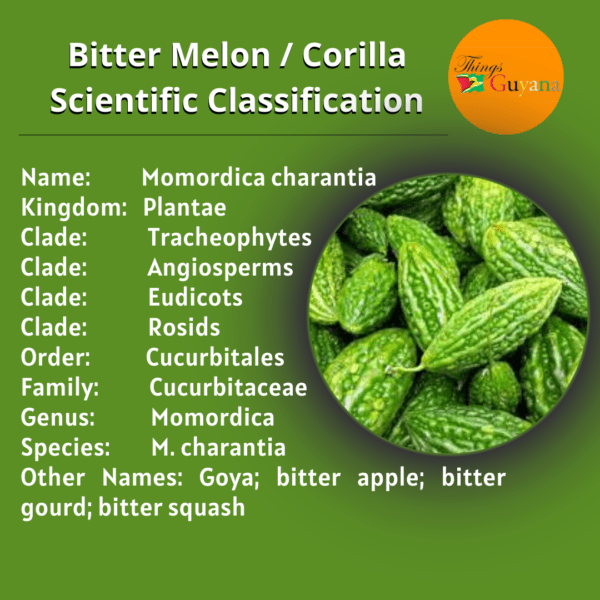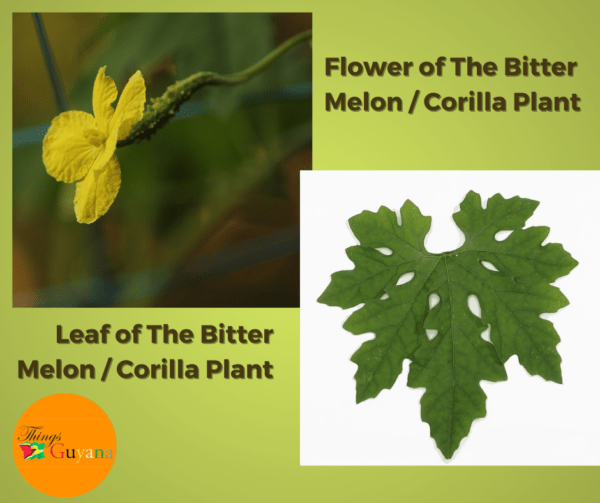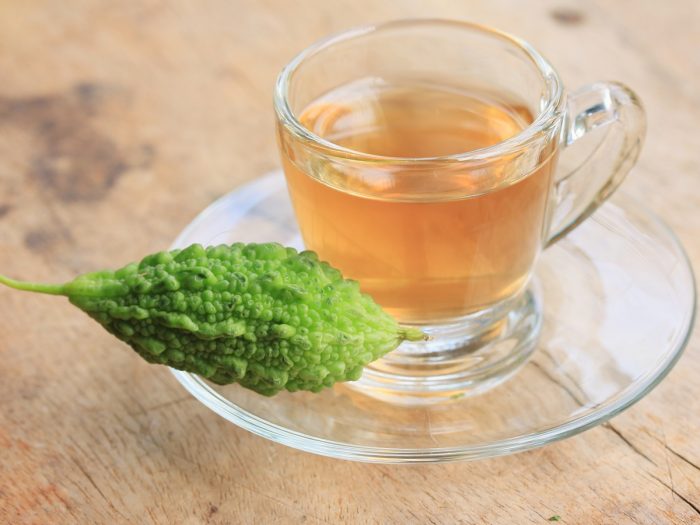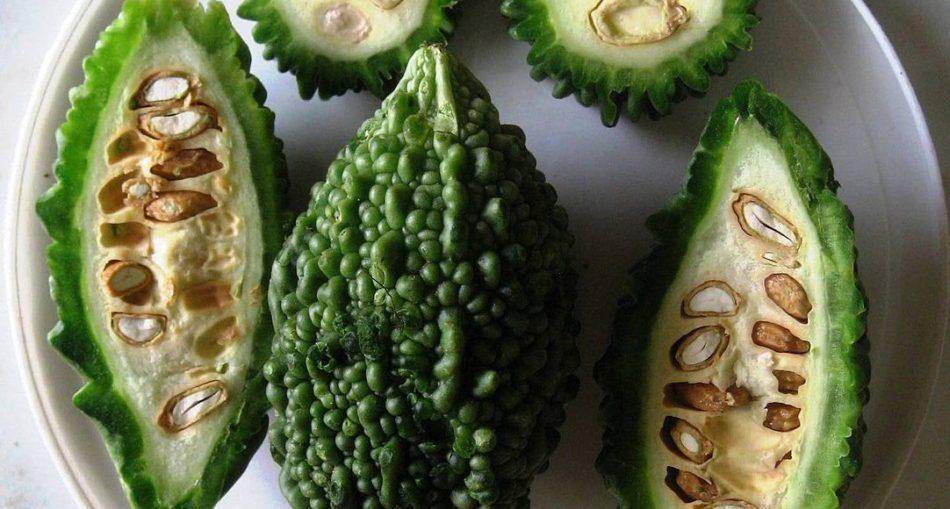This bumpy-looking vegetable is looked at disdainfully by many in Guyana. Since we were little, many of us were given the tea made from the leaves of the Corilla plant as a form of ‘bitters’, a traditional form of detoxing the body and getting rid of toxins, especially too much sugar, or so we were told as kids. Every time I hear the words ‘Corilla Bush‘ uttered, my childhood memories of being given this detox to drink every weekend causes me to retch. Most of us would have also fallen for the ol’ Corilla bush drink placed in a coca-cola bottle and then mistakenly drank it; maybe it was a sick prank by our parents or just blissful ignorance at what they were doing (my money’s on the first). However, despite you may have had your doubts about this method of ridding toxins from the body there have been studies conducted that show that Corilla and its tea may actually pose many health benefits.

Fun Facts:
- The type of Corilla that we grow in Guyana originated in China.
- Corilla is a Guyanese term but it is termed ‘Karela’ in India and the spelling was changed.
Description
These plants are tendrils which means that their vines are thread-like in nature and they tend to run along on the ground or on anything they can creep their vines on. The plant bears both male and female flowers which are yellow in colour. The fruit that is grown from the plant is usually oblong with bumps all over the skin. If you cut into one you would find seeds that are flat and eggshell white. In temperate zone such as in Guyana, this plant grows annually.
Fun Fact: Often times this is mistaken as a vegetable but it’s a fruit.

Distribution
Corilla is indigenous to India and South-East Asia. It is likely to have been domesticated in southern China and India, where it has a long history of use as a food crop and as a folk remedy. Since then, it has spread and has become naturalized in nearly all tropical and subtropical areas. It occurs practically everywhere in tropical Africa’s natural flora and is frequently harvested from the wild as a vegetable or medicinal plant.
Culinary Uses
Bitter melon / Corilla can be consumed when it is a green or yellow stag (ripened).
Fun Fact: To get rid of the strong bitter taste it can be soaked in cold water.
China – In China bitter melon is valued for its bitter taste and is used in soups, stir-fries, and teas. It is also added to beer that is produced giving it a bitter taste.
North India – In North India it is used as a side when eating yogurt to offset the sweetness.
South India – It is used in many dishes such as stir fries and curries. It is also popularly deep-fried with peanuts.
Fun Fact – In West Africa bitter melon is known as ‘famine food’
Health Benefits
Several Key Nutrients in Corilla:
- Calories: 20
- Carbs: 4 grams
- Fiber: 2 grams
- Vitamin C: 93%
- Vitamin A: 44%
- Folate: 17%
- Potassium: 8%
- Zinc: 5%
- Iron: 4%
- Corilla is rich in vitamin C which is necessary for bone development and very important in the healing process.
- Corilla is rich in vitamin A which promotes skin health and proper vision.
- Research has shown that Corilla has an important role in regulating blood sugar. Studies have been carried out with 40 diabetics showed that over the course of a few weeks showed that their level of blood sugar would have decreased. Corilla is thought to improve the way that sugar is used in your tissues and promote the secretion of insulin, the hormone responsible for regulating blood sugar levels.
- High levels of cholesterol can cause artery blockage which can cause many heart issues including causing heart attacks but research has shown that consuming Corilla reduces cholesterol
- Corilla can aid in weight loss, it is low in calories and high in fiber; fiber passes through the digestive tract slowly which helps you feel fuller and reduces the feeling of hunger.
How To Make ‘Bitters’ / Corilla Tea
Ingredients
- 3-4 slices Dried or fresh slices of bitter gourd (no seeds)
- 200 ml water
- Honey
Preparation
-
Take a tea pan, pour some water, and bring it to a boil.
-
Boil the water on medium heat for about 10 minutes.
-
Put bitter gourd slices into the boiling water and stir properly so that all the nutrients are immersed into the water.
-
Turn off the stove, add honey and let it sit aside for a couple of minutes.
-
Use a strainer and filter the content.
-
Serve hot.

Corilla Tea: https://www.organicfacts.net/health-benefits/herbs-and-spices/bitter-melon-tea.html
Although many of you might have not so fond memories of Corilla and developed a slight scorn for it, after reading this I would hope that it would have given you some more insight into the many benefits that Corilla possesses that might make you rethink your eating habits and also try to incorporate it more into your diet.
References:
- https://www.healthifyme.com/blog/bitter-gourd-recipes/#:~:text=Take%20a%20tea%20pan%2C%20pour,for%20a%20couple%20of%20minutes.
- https://www.healthline.com/nutrition/bitter-melon
- https://www.feedipedia.org/node/632
- https://en.wikipedia.org/wiki/Momordica_charantia







